Key takeaways
- Collaboration in photography enriches creativity by blending unique perspectives, resulting in more authentic and vibrant images.
- Working with local artists fosters trust, eases communication, and deepens the connection to the community, enhancing the storytelling impact of the photography.
- Open discussions and planning are essential for successful collaborative projects, as they help align visions and avoid misunderstandings.
- Embracing flexibility during the creative process can lead to unexpected breakthroughs and a more rewarding outcome.
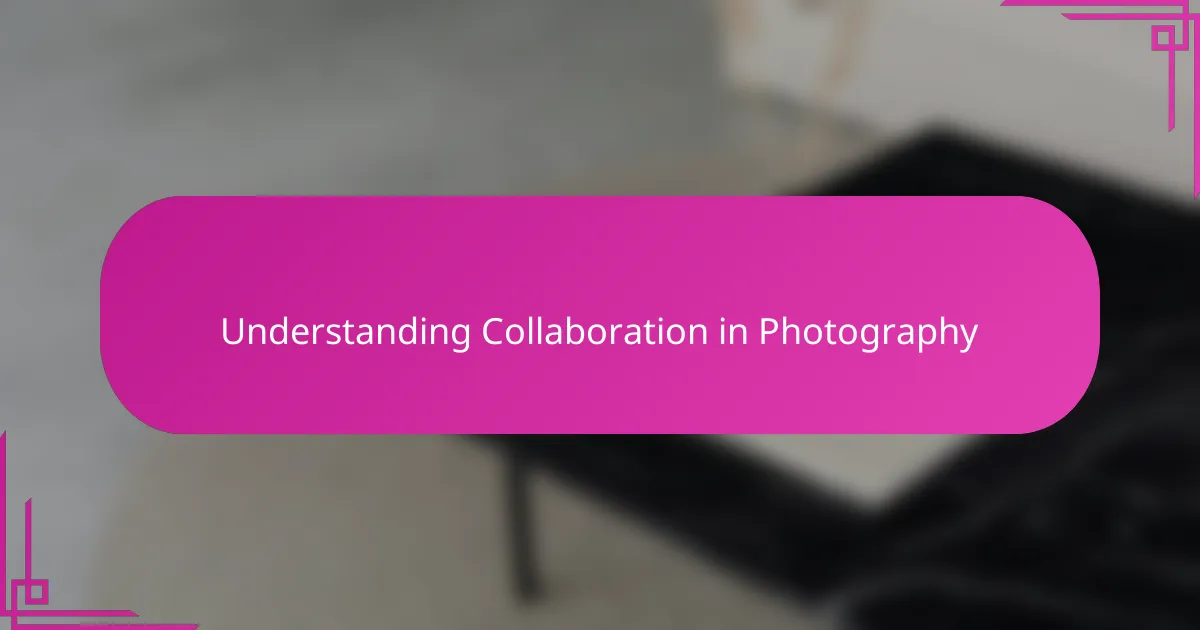
Understanding Collaboration in Photography
Collaboration in photography goes beyond simply sharing ideas; it’s about blending unique visions to create something richer than what one could achieve alone. I’ve often found that working closely with others, especially local artists, opens my eyes to perspectives I wouldn’t have considered. Have you ever noticed how a fresh viewpoint can completely change the way you approach a shot?
Sometimes, collaboration feels like a dance—each participant anticipating the other’s moves and responding intuitively. In my experience, this flow creates an energy that shines through the final images, making them more authentic and vibrant. Isn’t it amazing how two creative minds can spark something entirely new?
At its core, collaboration requires trust and openness, which can be challenging but ultimately rewarding. When I let go of control and welcome others’ input, the results often surprise me in the best ways. Have you ever hesitated to collaborate out of fear of losing your vision? I’ve been there, and overcoming that doubt made me a better photographer.
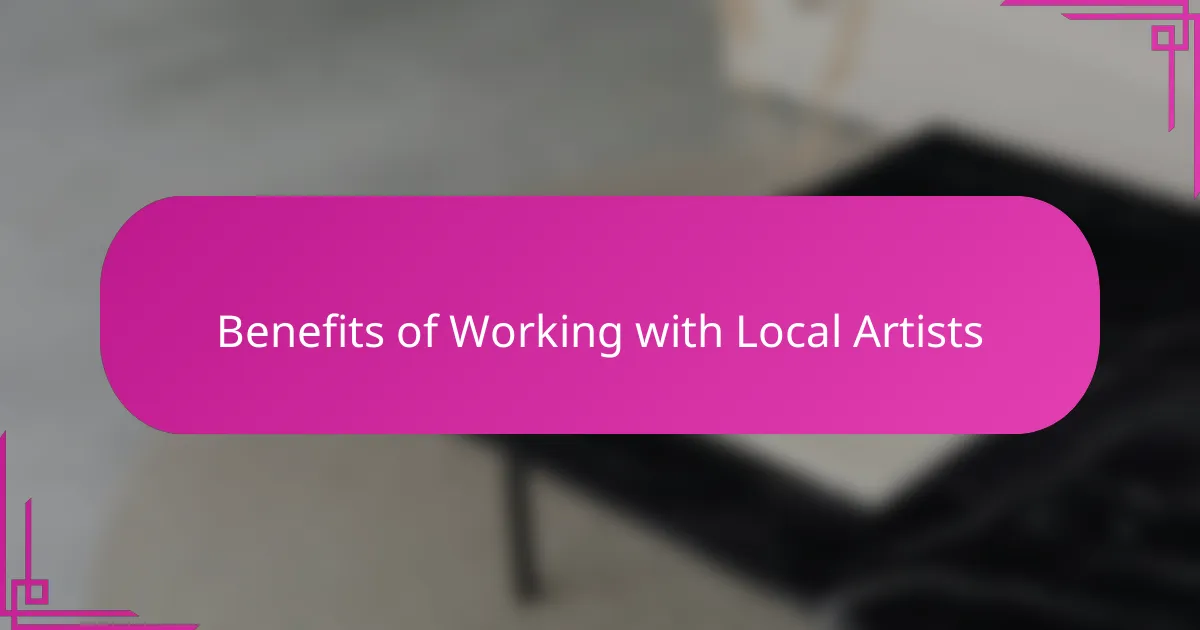
Benefits of Working with Local Artists
Working with local artists has enriched my photography in ways I hadn’t imagined. Their intimate understanding of the community brings authenticity to our projects, making the images resonate deeper with viewers. Have you ever felt how a picture can tell a story that feels both personal and universal at the same time? That’s the power of local insight.
I’ve also noticed how collaborating close to home breeds a stronger sense of trust and ease. When I’m working alongside someone who shares my environment, communication flows naturally, and ideas spark effortlessly. It’s like we’re speaking the same creative language without needing many words.
Plus, supporting local talent feels meaningful beyond the art itself. There’s an inspiring sense of contributing to a shared cultural fabric, and that connection often fuels my passion during challenging shoots. Doesn’t it make you want to invest more in your community when you see that ripple effect firsthand?
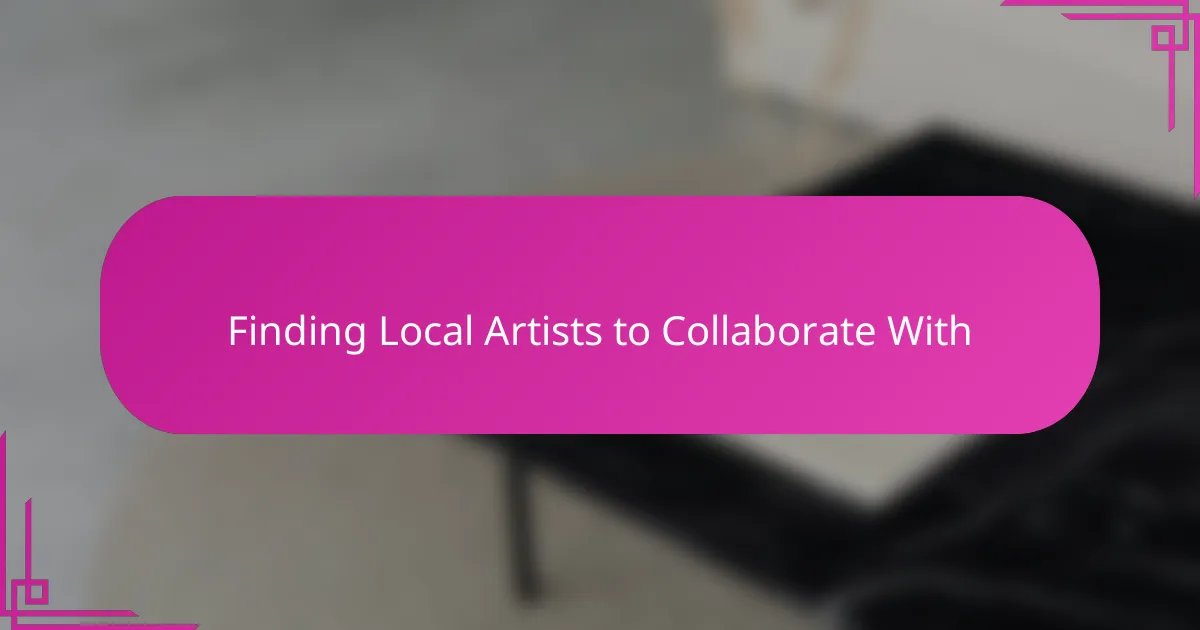
Finding Local Artists to Collaborate With
Finding local artists to collaborate with often starts in the places I least expect. I remember striking up a conversation at a neighborhood art fair that led to one of my most memorable photo series. Have you tried just showing up at local galleries or community events and introducing yourself? It’s amazing how openness can spark creative partnerships.
Social media is another tool I rely on, especially platforms dedicated to art and photography. Browsing local hashtags or joining community groups helped me connect with artists whose work resonated with my style. But it’s the face-to-face meetings afterward that truly build trust and understanding—something you just can’t get through a screen alone.
Sometimes, the best collaborators come from mutual friends or past connections. I’ve found that asking around, sharing my own work, and expressing genuine interest often opens doors to unexpected partnerships. Have you ever thought about leveraging your existing network to find creative allies? It’s a simple step that can lead to surprisingly rich collaborations.
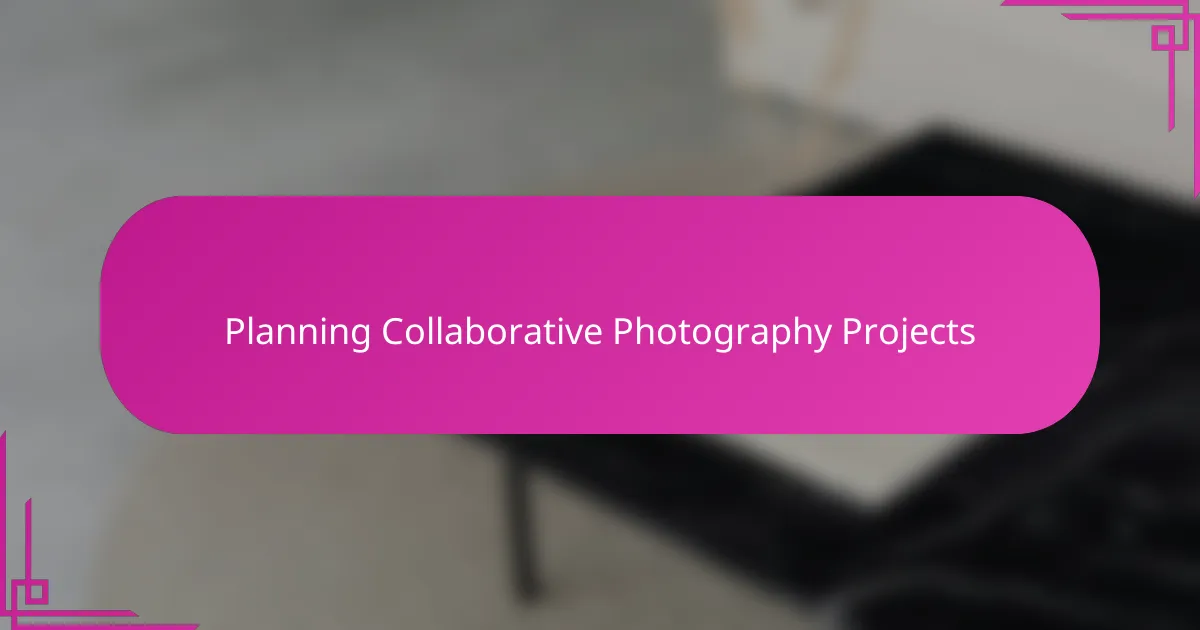
Planning Collaborative Photography Projects
Planning collaborative photography projects always feels like setting the stage for a creative adventure. I’ve learned to start with clear discussions about each person’s vision and goals; it really helps prevent misunderstandings later on. Have you ever tried hashing out ideas on paper or mood boards before picking up the camera? In my experience, this little extra effort saves a lot of time and sparks more innovative concepts.
Budgeting and scheduling can sometimes be the least exciting parts, but they’re crucial. When I map out timelines and resources with my collaborators upfront, everyone feels more confident and invested. I remember one project where a missed deadline almost derailed everything—planning together beforehand would have helped us avoid that stress.
Most importantly, I try to remain flexible during the process. Even the best-laid plans can shift when creativity takes unexpected turns. I’ve found that embracing this uncertainty often leads to the most surprising and rewarding images. Have you ever been pleasantly surprised by where a shoot ended up, despite initial plans? That’s the magic of collaboration at work.
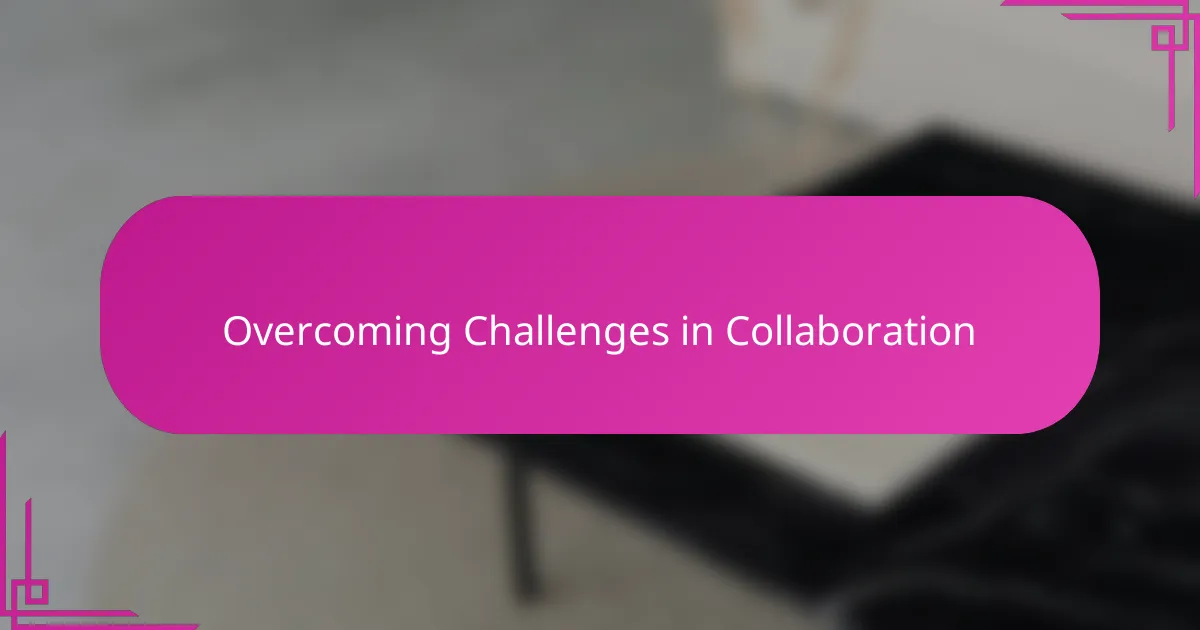
Overcoming Challenges in Collaboration
One of the biggest hurdles I faced early on was balancing different creative visions without stepping on toes. There were moments when I worried that conflicting ideas might stall the project, but I realized that open, honest communication was the key to smoothing things out. Have you ever experienced that awkward silence before hashing out a disagreement? Talking it through honestly often leads to unexpected breakthroughs.
Another challenge is managing practical issues like timing and resources, especially when everyone has their own commitments. I remember one collaboration where scheduling conflicts almost made us cancel; luckily, we found a middle ground by being flexible and patient. Have you noticed how a little compromise can turn a potential roadblock into a stepping stone?
Trust also plays a huge role. At first, I hesitated to share unfinished concepts fearing they might be rejected or misunderstood. Over time, I learned that vulnerability actually strengthens collaboration by encouraging mutual support and respect. Isn’t it strange how opening up can deepen a working relationship and push creativity further?
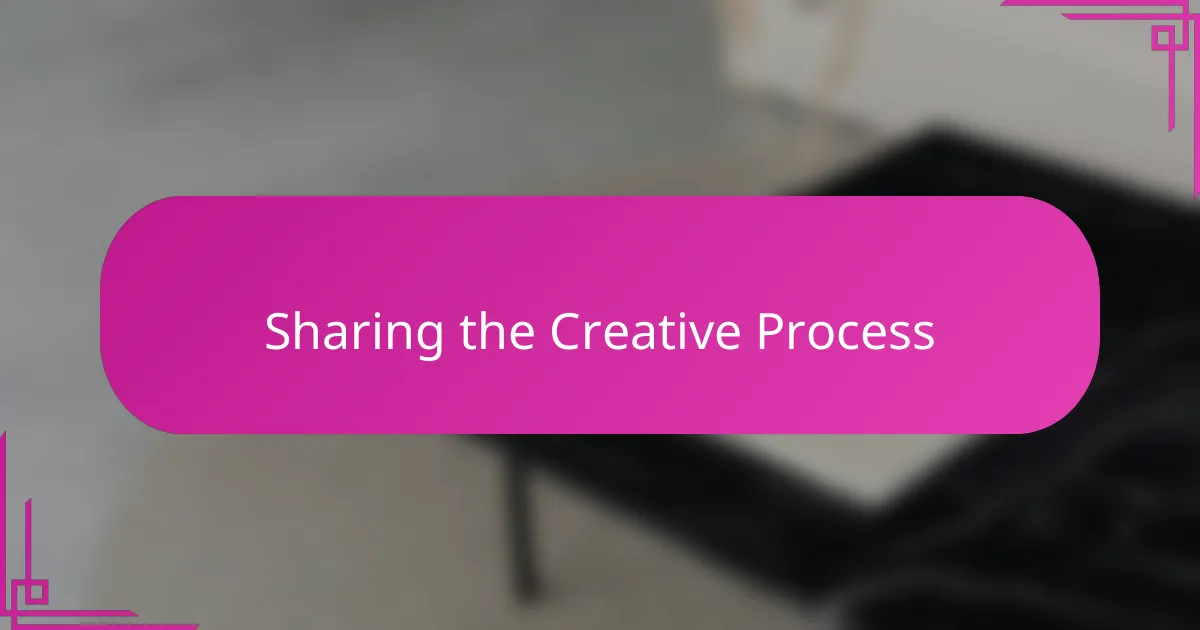
Sharing the Creative Process
When I share the creative process with local artists, it feels like peeling back the curtain on my own work. There’s a unique excitement in watching ideas evolve in real time, especially when someone else’s input shifts the direction in ways I hadn’t imagined. Have you ever noticed how discussing a concept aloud can ignite new sparks that otherwise stay hidden?
Many times, the back-and-forth exchange during brainstorming sessions has led me to experiment with techniques I wouldn’t try alone. I recall one collaboration where a painter’s bold use of color inspired me to play with vibrant filters I’d usually avoid. That willingness to share early-stage thoughts creates a safe space for creativity to thrive, don’t you think?
What I value most is how this openness builds trust. When we reveal our creative intentions and doubts, it becomes less about individual ego and more about shared vision. I believe this collective vulnerability transforms the project from just an image into a story woven by many hands. Isn’t that what makes collaboration truly special?
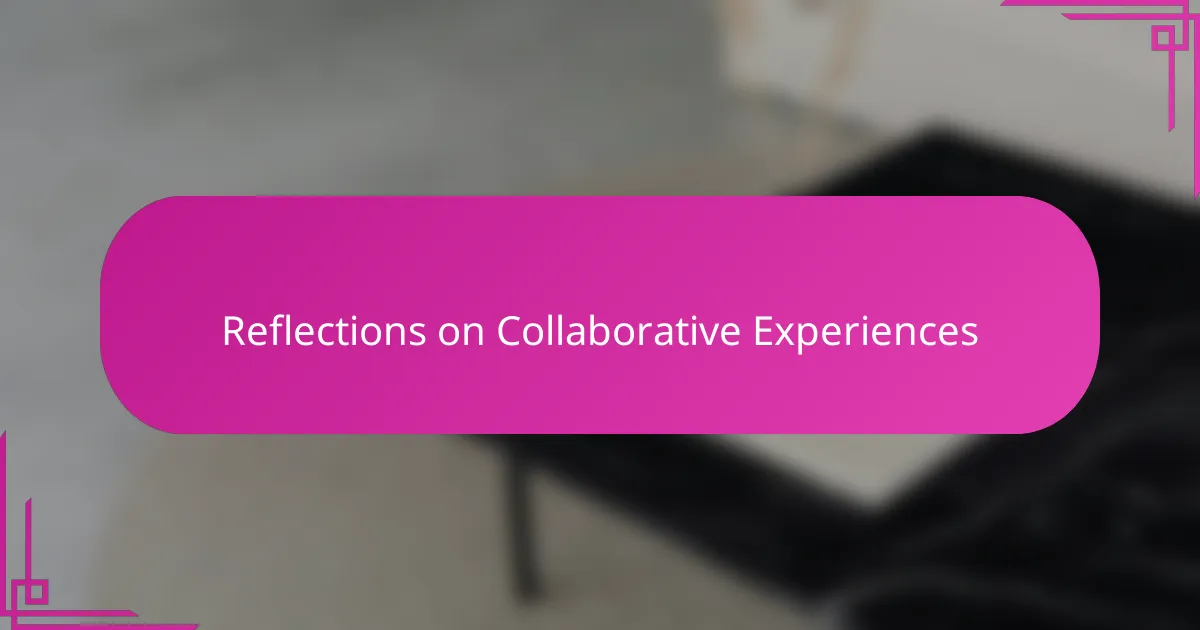
Reflections on Collaborative Experiences
Reflecting on my collaborations with local artists, I realize how those experiences have often pushed me beyond my comfort zone. There was one project where a sculptor’s unconventional perspective challenged my usual framing techniques, and at first, I wasn’t sure how to adapt. But that hesitation quickly turned into excitement as I discovered new ways to tell a story through my lens.
Sometimes, collaboration feels like a journey with unexpected detours. I remember moments of frustration when schedules clashed or ideas didn’t immediately align, yet those hurdles sparked deeper conversations and, ultimately, richer results. Have you ever found that the best creative breakthroughs come right after a tough challenge? I certainly have.
Looking back, what stands out most is the sense of connection I feel after working alongside local artists. There’s something deeply rewarding about blending our talents and seeing how our combined efforts resonate with the community. Don’t you think that kind of shared purpose adds a layer of meaning to the photographs we create?